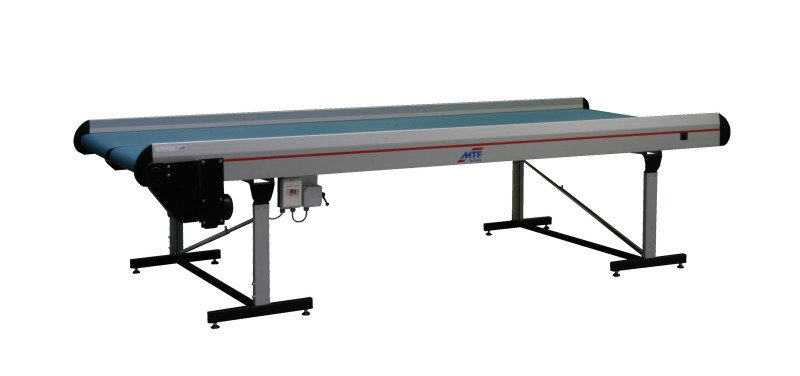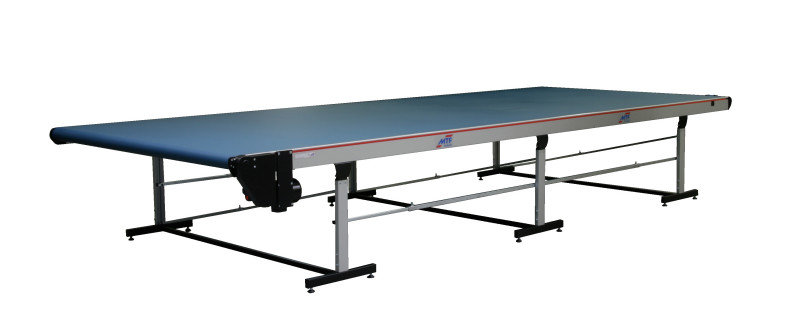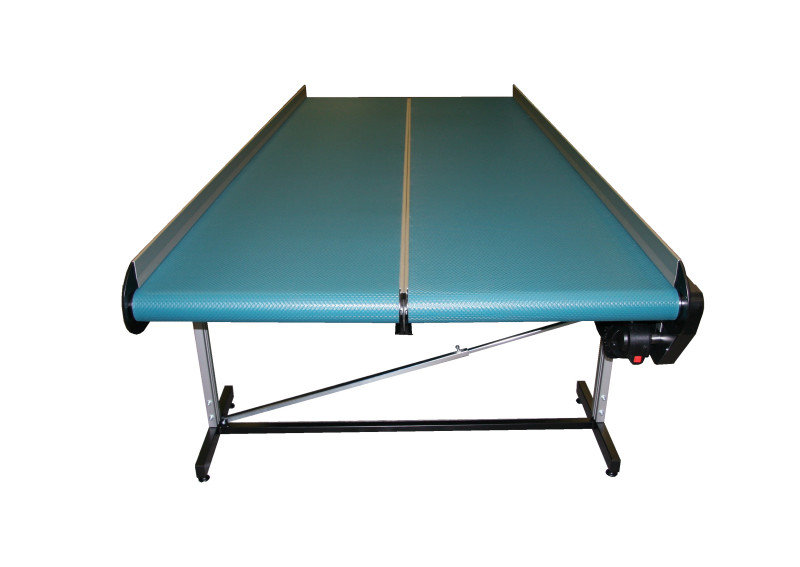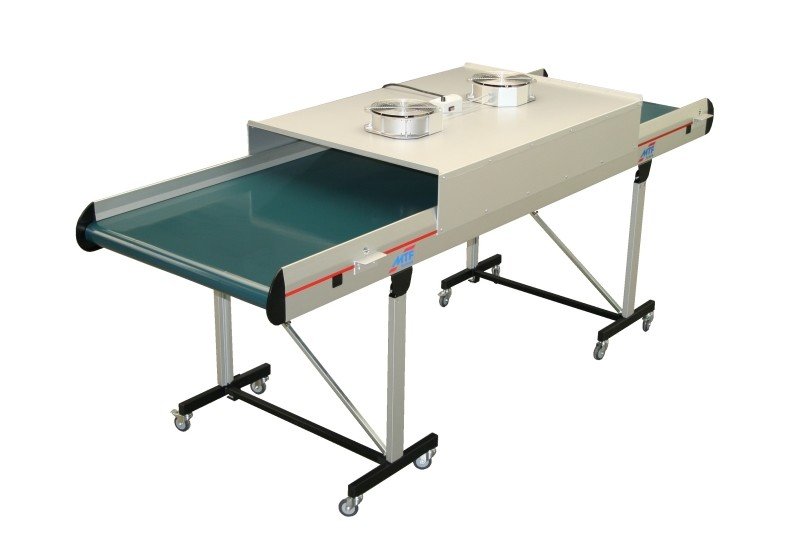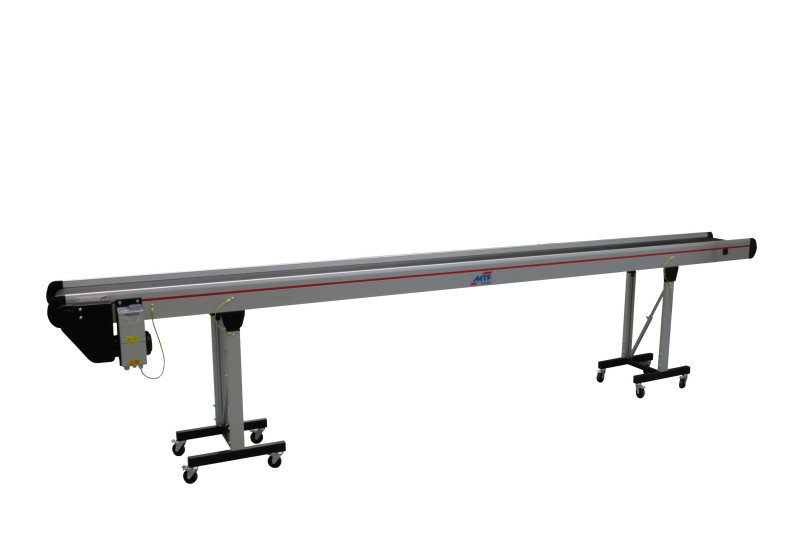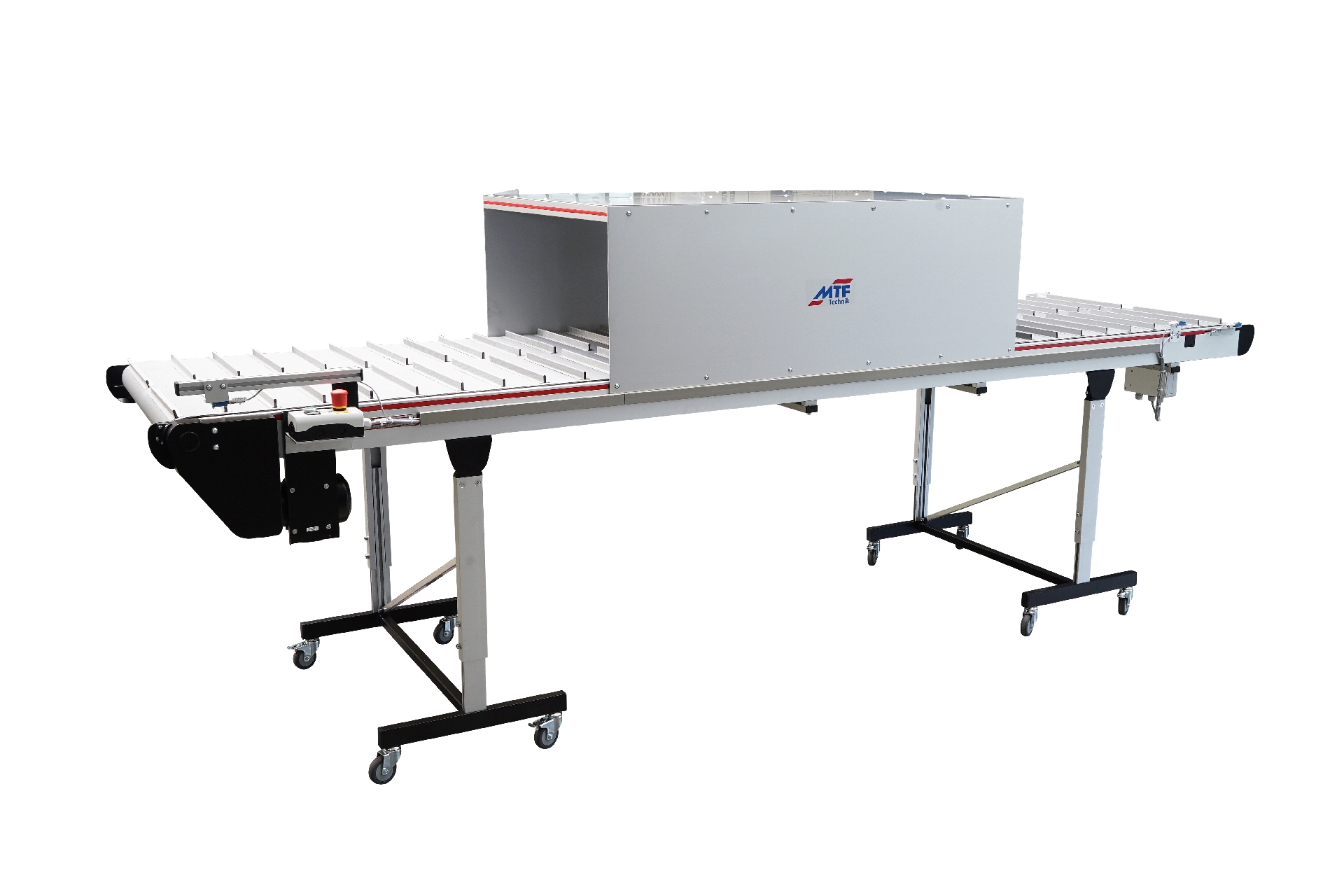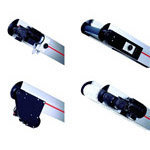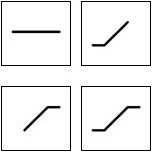Belt conveyors of this design are often used as robot deposit conveyor belts in many different industrial sectors and various processes (e.g. in the plastic injection moulding, plate deformation, die casting/stamping, assembly, cleaning or testing plants).
Of course, the conveyors can be applied at manual assembly work stations or integrated in packing processes or other automated applications. Furthermore, they are used, e.g. in press lines as transfer belts between different moulding presses or as part re-feeders to flow blasting plants for surface treatment and processing.
Depending on the task to be performed, many different belt qualities may be used. For many applications cost-effective PVC belts are sufficient; in the food or pharmaceutical industry PU-belt covers with FDA-approval and anti-static features or other special surface characteristics are required.
In cases of high temperatures of parts, e.g. in the plastics blow moulding industry or in the die casting/stamping sector, resistant polyester, silicone or special Kevlar belts made of felt are used.
Robot deposit conveyors are often designed without lateral guides or lateral supports. If particularly wide parts that are overlapping the belt body laterally, have to be deposited on the conveyor belt, it is necessary to use an underframe that does not protrude the belt upwards. Here, the underframe of type HM 010 with telescopic supports, to be mounted underneath the belt body, is very suitable.
In order to avoid interfering edges above the belt surface with regard to the drive, it is recommended to mount the motor underneath the belt body. However, e.g. drum motors can be used as well.
Depending on the application or tasks to be performed, belt conveyors of this type can be equipped with versatile control functionalities and sensor systems. Here, so-called digital tact-switch devices are used frequently. These can be connected to a production machine or a robot controller. Thus, the conveyor belt can communicate with the available technology easily via e.g. potential-free contacts.
Belt conveyors with this underframe type can be manufactured in a width of up to 2,000mm and they provide excellent stability and flexibility.
